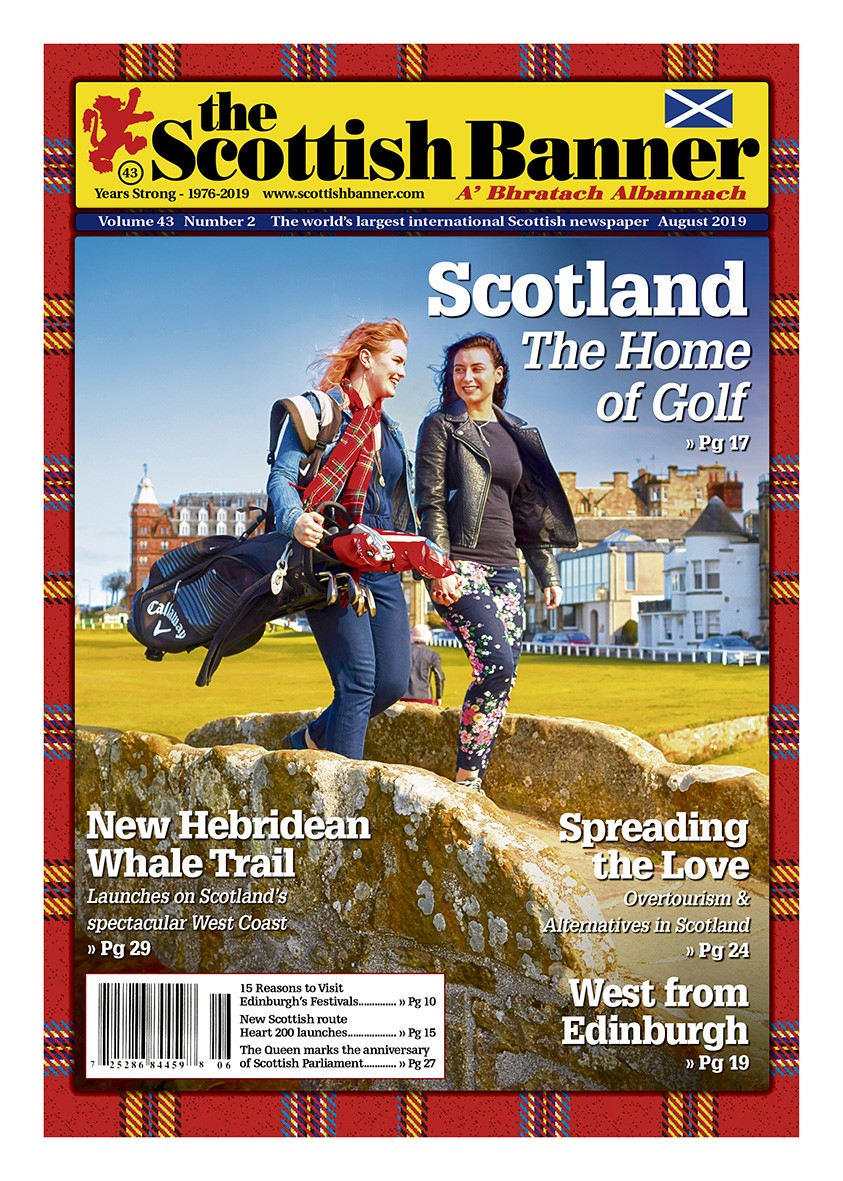August 2019 (Vol. 43, Number 02)
-

Gracing our front cover: The Old Course, St Andrews.
Photo: VisitScotland.
The Banner Says…
What lies beneath:The lost settlements of Glencoe
On a windswept moor laden with wild grass and heather lies a part of Scotland’s past, which archaeologists from the National Trust for Scotland (NTS) hope to uncover. However, it is just not artefacts the team are looking to uncover, but remnants of entire villages and it is not just any windswept moor but Glencoe, one of Scotland’s most popular, dramatic and historic locations.
Clachans
Glencoe is without question a place of extreme beauty nestled in the Scottish Highlands, it is also a place of great tragedy where blood has soaked its soil. The Glencoe Massacre took place on February 13th, 1692 and still today holds people’s fascination. 38 men, women and children of the MacDonald Clan were murdered by a regiment of soldiers who had arrived in this incredible area of rugged beauty as friends. They stayed with the families for 12 days before being ordered to murder them all.
The small traditional settlements (also referred to as clachans) of Inverigan, Achnacon and Achtriochtan vanished during the Highland Clearances, where thousands of people were forcibly evicted from their homes in the 18th and 19th centuries by landlords who wanted to create large farms. These forced evacuations left behind a way of life and tradition which is long past and appears to have been literally sealed over by greedy landowners.
Archaeologists and a team of volunteers have recently discovered the remains of buildings and homes and pieces of working life, allowing them to peek into what life was like in rural Scotland over 300 years ago. The NTS hopes now raise funds in order to continue its intricate unravelling of the past and also to build some replica turf houses so 21st century visitors may get to a taste of what life once was like for those hardy Scots.
In this issue
Scotland is known worldwide as the ‘Home of Golf’. It has some of the world’s top courses and hosts some of the most prestigious golfing events. Golf is also a great source of tourism for Scotland and a recent study released stated that golf was worth over £300 million to the Scottish economy and was responsible for nearly 5000 jobs. I do not play golf but have been fortunate to stay at some of Scotland’s best golf locations and loved being amongst the beauty and tranquillity of Scotland’s courses (which can be found across the entire country).
Readers of the Scottish Banner no doubt either have been, plan to or simply wish they could travel to Scotland for a holiday. Tourism contributes around £6 billion to the Scottish economy and employs over 200,000 people so it is a vital industry. However, many visitors to Scotland are hitting the same places and missing out on so much on offer. Overtourism is a word being used around the world where there are too many visitors to a destination. You would think overtourism could only be good for the economy however let us spare a thought for those Edinburgh residents who will be sharing their city with the world this month. If like me, you have been to Edinburgh in August you will know it is a fun but busy place and you may be forgiven to think the over 2 million visitors who visit the city each year are in fact there just in August. Getting people to keep coming to Scotland but trying a new slice of Scottish pie surely must be something tourism groups are hoping to achieve.
A new Hebridean Whale Trail on Scotland’s spectacular west coast has been launched by the Hebridean Whale and Dolphin Trust. Scotland’s west coast is one of Europe’s best places to catch sight of whales, dolphins and porpoises from land – and you may see bottlenose and common dolphins, harbour porpoise, minke whales and killer whales. The trail also takes in some fantastic beaches, lighthouses and historic sites and a perfect example of blending Scotland’s wildlife, scenery and history.
Other-worldly
Speaking about the Glencoe project Neil Oliver, historian and president of the National Trust for Scotland, said: “Never before has this type of work been carried out at Glencoe. We now need to raise £300,000 to bring this project to life. This will support our archaeological work and enable us to recreate two turf houses, using traditional methods and materials wherever possible. We need the public’s help to do that and as a charity, we rely on donations to help us share the stories of iconic places like Glencoe. With your support we can bring alive the sights, smells and sounds of the 17th century and help us to remember those who lost their lives in the troubled times that shaped Scotland’s history. This project will also help us celebrate the resilience of the Highlanders and their way of life, now and for generations to come.”
I remember my very first visit to Glencoe and noticing two things the windy cold and the quiet, it for me was somewhere very much “other-worldly”, a place of vastness and rugged beauty. I have not been back for many years and the fact that this dramatic landscape is revealing a part of its past is very exciting. Our Scottish ancestors continue to teach us about their story, however tragic, and we are all the richer for it.
To find out more about the project at Glencoe and to make a donation, visit www.nts.org.uk/campaigns/glencoe
Have you been to Glencoe? Share your story with us by email, post, social media or at: www.scottishbanner.com/contact-us
